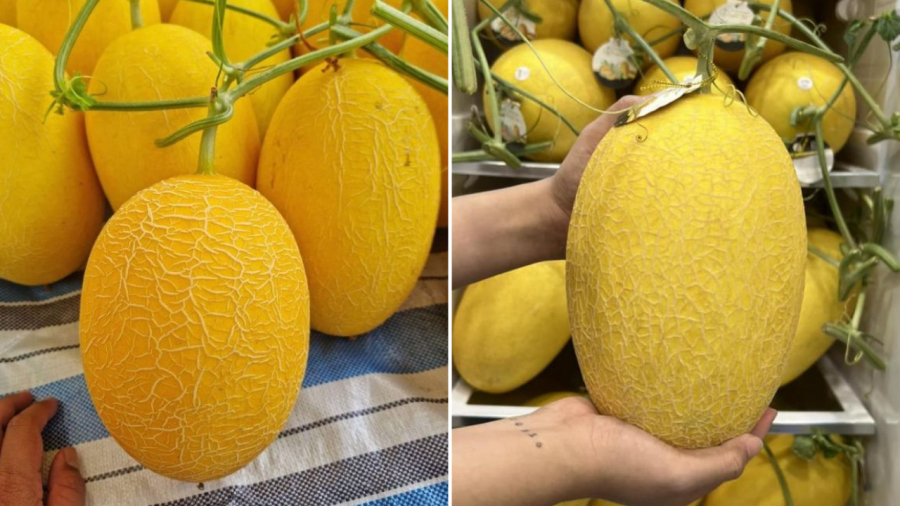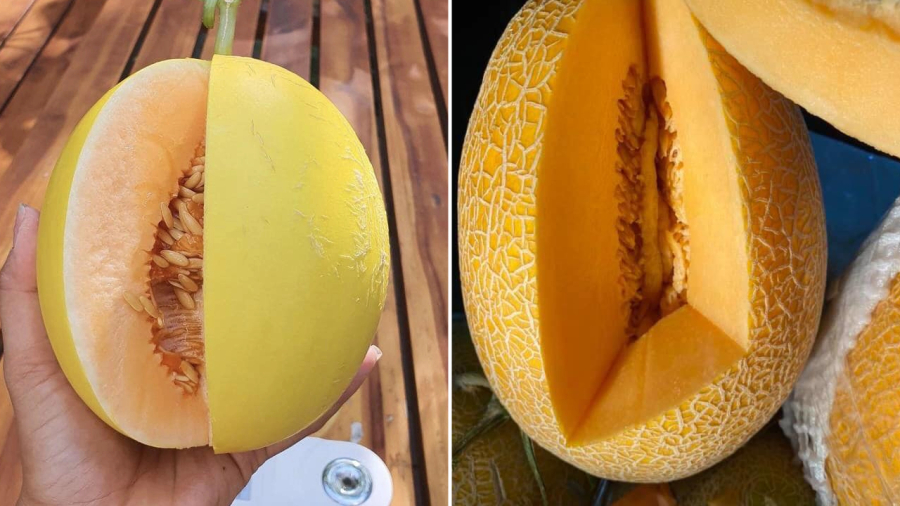Golden melon is a delicious fruit with a sweet fragrance when ripe. Its juicy flesh is very refreshing, especially during hot summer days. When buying golden melon, many people wonder how to choose one with a thin rind, ripe golden flesh, and sweet taste.
To select a sweet and ripe golden melon with a thin rind, keep in mind the following tips.
How to Choose a Ripe and Sweet Golden Melon with a Thin Rind
– Check the Stem: Should I buy a melon with or without a stem?
According to experienced farmers, when buying a golden melon, it is best to choose one without a stem. The stem is where you can observe and assess the ripeness of the fruit. When a melon is naturally ripe, the stem will dry and detach from the fruit, leaving a shallow, smooth circular indentation. The edge of this circle has a serrated pattern. This is a sign that the melon is ready to be harvested.
Melons that have naturally detached stems are usually sweeter, juicier, and have a more intense flavor and aroma.
On the other hand, melons harvested prematurely will have stems firmly attached. These melons will not have the desired sweetness and their flavor will not be as appealing.
When choosing a melon with a detached stem, inspect the entire fruit. Avoid buying melons with signs of bruising, cracking, or damage due to over-ripeness.

Choose a golden melon that has naturally detached from its stem, indicating ripeness.
– Selecting Golden Melons by Observing Color and Shape
One of the most important factors in determining the ripeness of a golden melon is its color and shape. Ripe melons typically have a bright yellow rind, evenly colored, without any green patches.
Opt for melons with a rounded shape, well-balanced, and with both ends relatively equal, avoiding misshapen or indented fruits.

Depending on the variety, the size of golden melons may vary. Choose a heavy, evenly colored melon for the best taste.
– Inspecting the Melon’s Rind
A good golden melon will have a dry, slightly bumpy rind instead of a smooth and waxy one. As mentioned, the color of the rind should be uniform, a single shade of yellow.
You can gently press the melon with your thumb; if it yields slightly but is not too soft, it is perfectly ripe. A hard rind indicates an unripe melon, while an overly soft one suggests spoilage.
Choose melons that feel heavy for their size.
– Tapping the Melon
Another way to choose a golden melon is to gently tap on its rind. If you hear a deep, hollow sound, it indicates a ripe melon with thick flesh. Conversely, if the sound is dull and flat, the melon may be unripe or overripe.
Storing Golden Melons
If you’re not planning to consume the melon immediately, store it in a cool, dry place for a few days. At room temperature, the melon will retain its sweetness and freshness optimally. Avoid placing it in high-temperature areas or direct sunlight. However, if the external environment is too hot, or you wish to store it for a more extended period, you can keep it in the refrigerator’s crisper drawer.
What Sound Should You Listen For When Thumping a Watermelon to Pick the Ripe One?
 Ripe One?’>
Ripe One?’>“A sweet and juicy treat, this cucumber variety is a delight. With my expert knowledge, you will easily be able to identify the ripe and ready cucumbers, ensuring a delicious and refreshing experience. No more bitter, unripe fruits – only the very best.”
I hope that captures the essence of what you were aiming for.





































